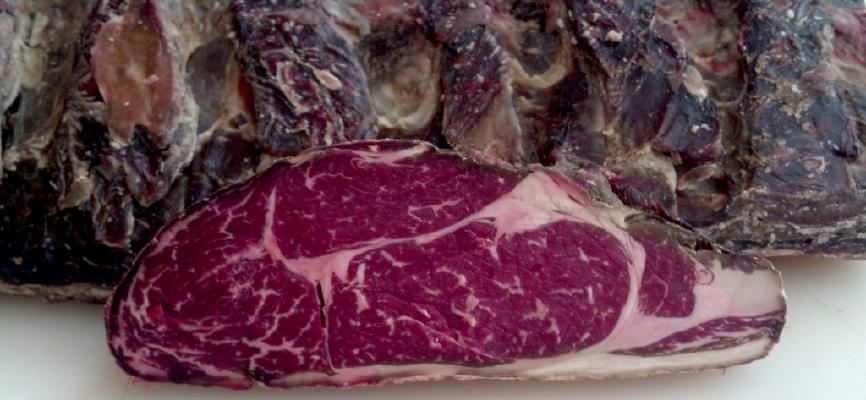
My first home dry aged roast. The sample I cooked up was spectacular. Fork tender, complex, intense flavor. Here’s what I did…
Bought a whole USDA Prime Ribeye. You need a large piece of meat, I tried dry aging individual steaks, but you can’t leave them in for 2 weeks, you’ll loose too much material, and end up with an amuse-bouche. Ribeye is my favorite steak, there’s enough fat to keep the steak tender when searing, and for my palette it just has the richest flavor.
Prerequisite:
A fridge you won’t be using for a couple weeks that can keep a stable temperature of 35-38 degrees, and a way to keep the humidity at 40-50%. Mine stayed humid enough without having to add a pan of water, but instructions I read from people who do this a lot included a moisture source in the fridge, and a small fan that would keep air circulating inside the fridge.
Directions:
- Unwrapped washed, and towel dried the whole ribeye
- Put the ribeye on a metal rack, sitting over a baking pan to catch any liquid that comes out out, allowing air to circulate around the entire ribeye.
- Put the ribeye in the fridge in the place you’ve previously checked out and made sure the temperature and humidity stays stable.
- Leave it there for 2 weeks. If you don’t have a remote way to check the temp/humidity, do a very quick check once every day or two, but don’t keep the fridge open long enough for the temp to change, you want the environment to stay stable.
- Remove from the fridge, and trim all the hard and/or discolored meat from around the edges. It’s easiest to cut it into a steak, and then trim the edges. I found I had to trim about 1/4-1/2″. I took the opportunity to also trim some excess fat, resulting in removing about 30% of the meat.
All told, I lost about 40% of the original weight to the steak drying, and trimming the outer parts.
The result? A fork-tender steak, amazingly flavorful. It rivals all but the best I’ve had at restaurants that specialize in top quality steak. But, they have access to better cuts of beef than I do, and better controlled conditions for aging, as well as controlled high-temperature cooking, so that’s to be expected.
Cost-wise, in 2012, I was able to get a 15 pound prime ribeye for under $7 a pound, which after the material loss from aging, brings it to around $12/lb. That’s less than half what a dry aged steak costs at my local butcher.
2012-02-26 22:17:00 +0000 UTC